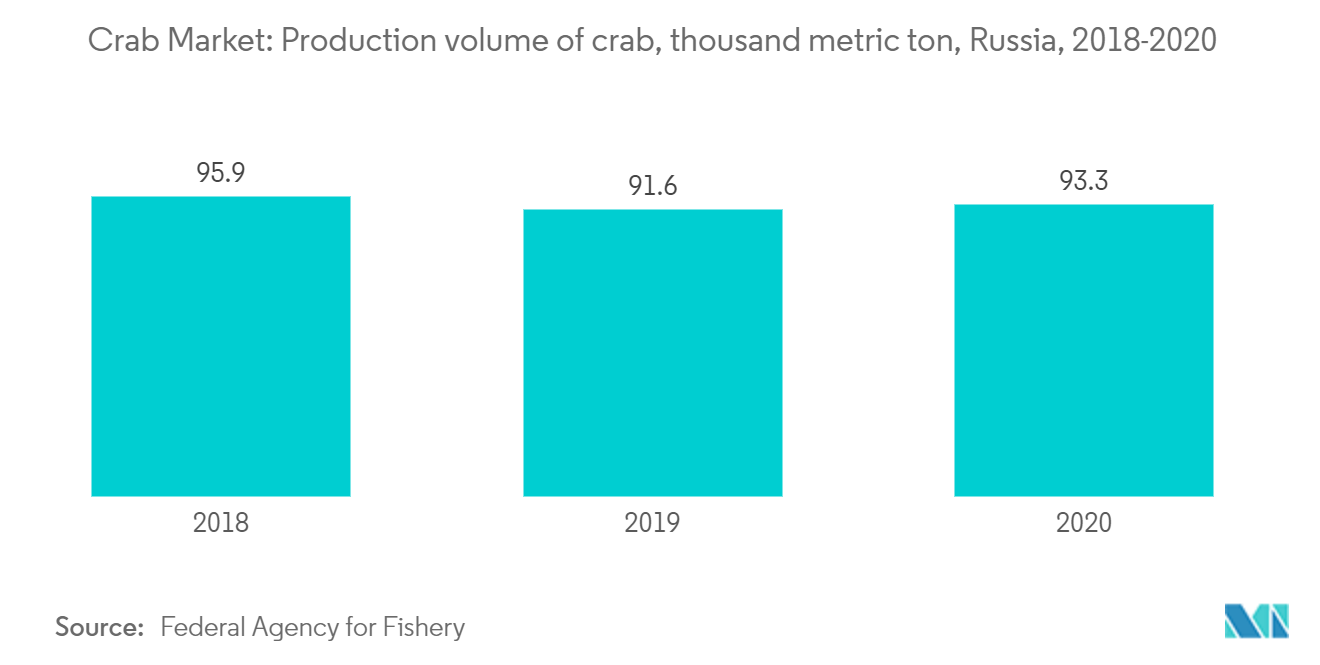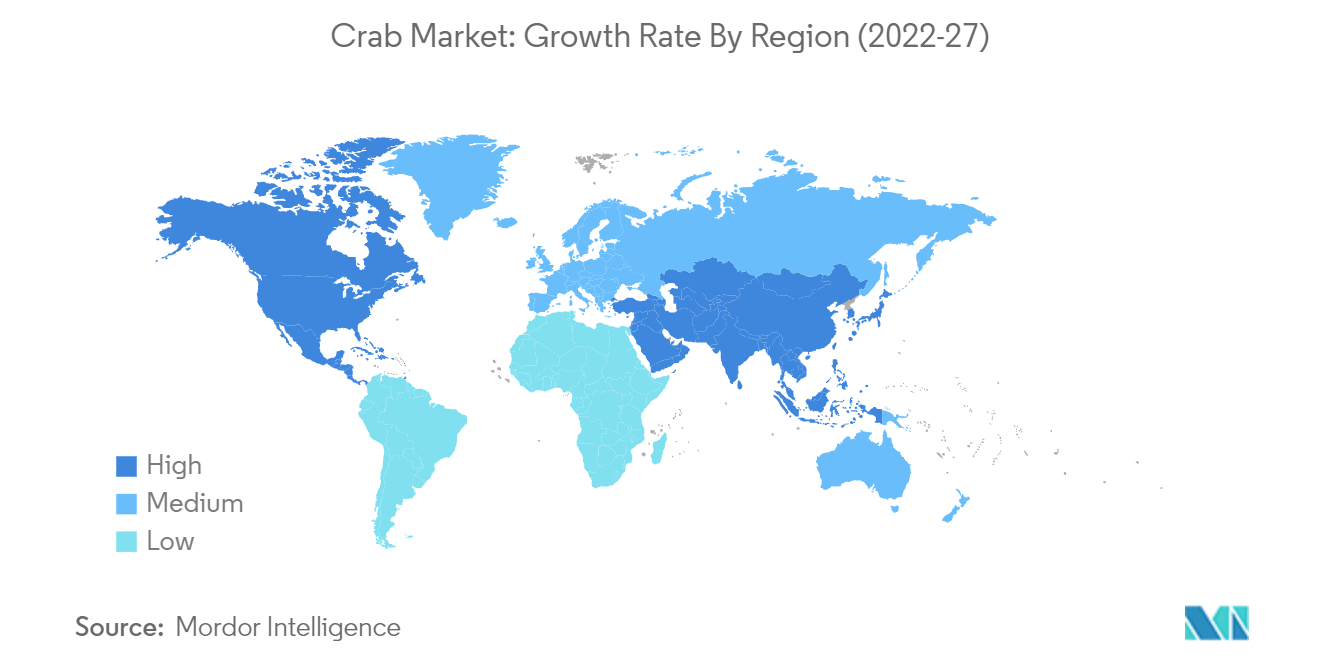Market Trends of Crab Industry
This section covers the major market trends shaping the Crab Market according to our research experts:
Increasing Awareness About the Health Benefits of Crabs
Growing consumer awareness about the health benefits of crabs is a key factor driving the growth of the crab market. Significant amounts of proteins, minerals, and nutrients can be found in crabs. It has little saturated fat and is an important source of the omega-3 unsaturated fats docosahexaenoic acid (DHA) and eicosapentaenoic acid (ECA) (EPA). Crab also contains soothing qualities that can be helpful for people with joint pain. Additionally, it decreases vascular stress.
Crab has numerous other health benefits, some of which include improving bone and heart health and promoting emotional well-being. Owing to such health benefits and demand, consumption is increasing globally, leading to an increase in production across the globe as well. For instance, according to Federal Agency for Fishery, the production volume of crab in Russia increased from 86.3 thousand metric tons in 2017 to 93.3 thousand metric tons in 2020.
According to MPEDA, in 2021, the area under mud crab cultivation in Andhra Pradesh, India, was over 5000 hectares. MPEDA also claimed that it had identified several areas in four to five districts with the potential to cultivate mud crabs, scientifically known as Scylla Serrata. The state produced over 2000 tons of mud crabs in 2021. Moreover, changing lifestyles and an increasing working population have paved the way for foods like crabs that require less preparation time and have high nutritious value. All these factors collectively are expected to drive the demand for crabs across the globe.

North America in the Fastest Growing Region
North America is the fastest-growing region in the market for crabs globally; it is one of the major contributors to the total share of the crab market globally. According to a report by the National Oceanic and Atmospheric Administration (NOAA), increases in seafood landings, as well as rising demand for imported crabs and other seafood from health-conscious consumers, have raised the share of seafood in the American diet in recent years. The annual fisheries report published by the NOAA revealed that in 2020, crabs were the highest-value species in the United States, with a value of USD 584 million, and Alaska accounted for 60% of seafood landings, the highest in the country. Historically, in the United States, Jonah crabs were harvested as an incidental catch by fishermen targeting lobsters in the northwest Atlantic Ocean. But commercial interest in the species as a targeted catch has grown in recent years.
Additionally, according to the Bureau of Labour Statistics, the average expenditure on fish and seafood per consumer unit in the United States in 2021 accounted for USD 729. Similarly, according to Progressive Grocer, the share of seafood shoppers looking for sustainable seafood products in the United States has increased from 2019 to 2021. In 2019, only 29% of seafood shoppers were sustainable. This figure was at 41% in 2021. Moreover, according to the government of Canada, the Total Allowable Catch (TAC) available for the 2022 SGSL Snow crab fishery is 32,519 tons given to strengthen the domestic supply and push down the prices. This increase in seafood consumption is expected to boost the growth of the crab market at a faster pace during the forecast period.

